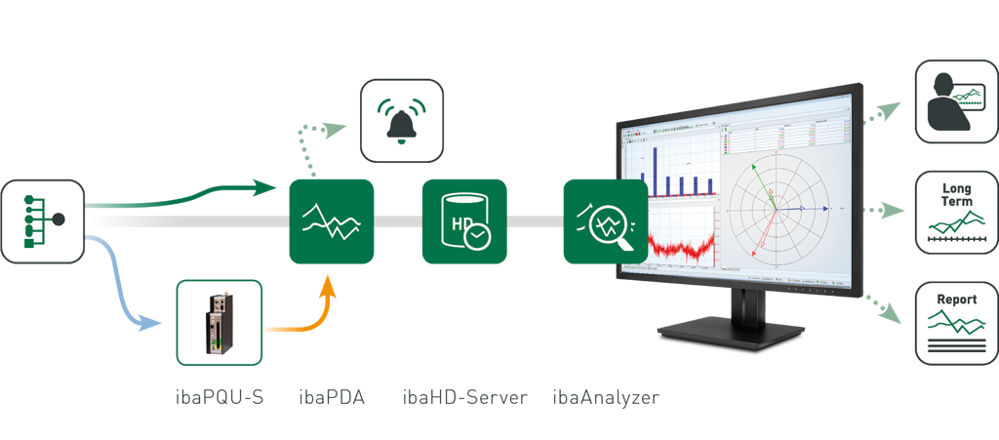Power Quality

Power Quality
Measuring and monitoring electric power quality is a crucial tool for energy producers, grid operators, and consumers alike. Documenting supply reliability and voltage quality to prove compliance with emission limits is possible, in addition to providing the analytics tools to troubleshoot and prevent faults.
Business Benefits
- Reduce energy costs
- Avoid fines
- Document voltage quality
- Observe emission limits
- Analyze faults
- Meet quality requirements
Safety and Quality in Energy Grids
Power Quality: The Burden of Proof is on Energy Producers
The stability of the power grid is influenced by distributed energy generation, as well as the associated fluctuating provision of power from renewable resources. Energy suppliers must always ensure that the energy fed into the public grid meets the quality criteria of the European Standard EN 50160. This not only affects utilities, but also companies operating their own power plants that feed energy into the public grid.
High-quality Power requires optimized Facilities
Grid operators have to comply with EN 50160 as well. The requirements for transmission grids increase with the distributed structure and use of power electronics, e.g. to control power flows or operating HVDC facilities where direct current is transmitted over very long distances. In addition to monitoring the electrical power, it is also important to monitor the electrical control systems, such as inverters and rectifiers.
The modular ibaPQU-S system enables the raw electrical power and calculated power quality characteristics to be synchronously integrated with the recorded process data in ibaPDA. This enables users to thoroughly evaluate all data, recognize contexts, and thereby determine the root causes of faults or quality variations. Moreover, analytics of measured data provide important information regarding sizing the power system for its optimal operation.
Consumers are obliged to not disturb Power Quality
Electricity consumers influence the grid quality by their powered electronic devices, e.g. frequency-regulated drives. Grid reactances and the harmonic factor of the currents create repercussions in the grid that impair the power quality in the supply grid. An example is the high surge-like load caused by the starting and running of large machines, e.g. main drives of rolling mills or arc furnaces. Both energy producers and large-scale consumers must observe the "D-A-CH-CZ - Technical Rules for the Assessment of Network Disturbances" that specify the limits for the emission of power system disturbances.
The ibaPQU-S system is also capable of determining the characteristics required in this body rules and of monitoring compliance with the limit values. Moreover, power suppliers contractually agree with each large consumer the extent of disturbances they are allowed to inject into the grid. A violation of the limit values can be punished with fines. Monitoring the electric power quality at the transfer point provides information about whether and what disturbances are fed into the grid.
Possible Applications for Power Quality by iba
The iba system provides a wide range of functions to monitor and optimize electrical power facilities
- Continuous monitoring of the power quality in energy grids
- Digital fault recorder (transient fault recorder)
- Integration of the protocol standard IEC 61850



